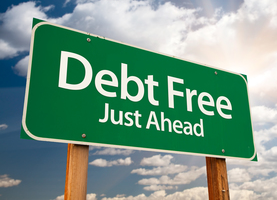by Semify
Debt is a significant financial concern that impacts many people. When you understand the facts and consequences of debt, it can help you make informed decisions when managing it. This article explores three essential facts about debt in the U.S., highlighting the prevalence of wage garnishment, Chapter 13 bankruptcy, and the staggering value of loans held by U.S. commercial banks.
1. Wage Garnishment and Debt
Wage garnishment occurs when the debtor’s earnings are withheld to pay an outstanding debt. An individual finds themselves in wage garnishment when as a debtor, they don’t make payments, or the debt is in default. When an individual is subject to wage garnishment, it significantly impacts the debtor’s ability to pay their other bills. As a result, they may not be able to meet their basic needs.
When they can’t pay for their basic needs, it can also make it challenging to recover financially over the long term. When it comes to wage garnishment, some laws and rules control the garnishment. These rules vary based on each state and the type of debt. When debtors understand the regulations, it helps them navigate their financial situation better. They also understand which solutions are available to them.
2. Chapter 13, Bankruptcy and Debt Management
Chapter 13 bankruptcy is a legal process that helps debtors keep their property while repaying debts over an extended period. According to U.S. Courts, this period is usually three to five years. When debtors file Chapter 12 bankruptcy, it allows them to restructure their debts. When they do this, they can create a more manageable repayment plan. A manageable repayment plan gives debtors a way to gain control over their finances and avoid having to liquidate assets.
When debtors file Chapter 13, they can keep their property while working towards paying their debts. Chapter 7, on the other hand, requires debtors to turn their assets into cash to pay off their debts. Chapter 13 bankruptcy gives debtors a chance to rebuild their financial position when they follow a court-approved repayment plan. It can offer a fresh start and a path toward improved financial stability.
3. Loans Held by U.S. Commercial Banks
The size of debt in the U.S. is highlighted by the value of loans that are held by U.S. commercial banks. According to Statista, as of August 2022, the value of loans held by U.S. commercial banks was more than USD 17.3 trillion. The loans in the U.S. represent diverse borrowers. The borrowers include institutions, businesses, and individuals. The loans cover different types of debts. The most common debts in the U.S. include car loans, mortgages, and student loans.
The debt in the U.S. is significant not just for individuals but also for the country. It has impacts on spending, interest rates, and financial stability. When there is out-of-control debt in the U.S., it can prevent growth and productivity. The resources used to address the debt could have been used for productive investments, innovation, and infrastructure development. High levels of debt can reduce consumer and investor confidence, potentially leading to reduced spending and investing.
Debt is a widespread facet of personal finance and the broader economy. When the facts about debt in the U.S. are understood, people have the power to make informed financial decisions. When individuals can manage their debt, they can take other steps, like exploring options and finding professional help when needed. When individuals make informed decisions, they can achieve financial security and long-term health. Understanding personal debt and the debt in the country is only the first step. From there, people must make the best choices when it comes to spending.


